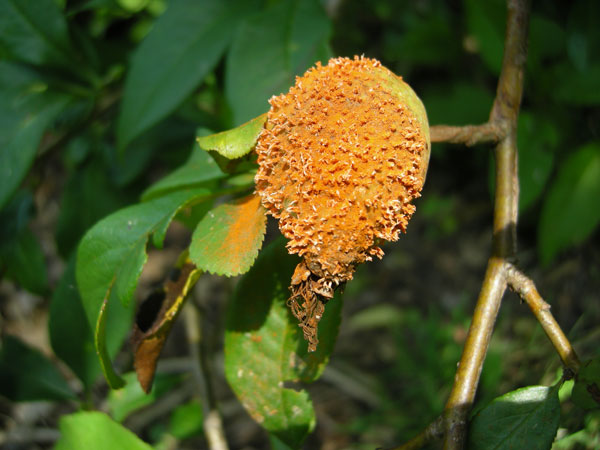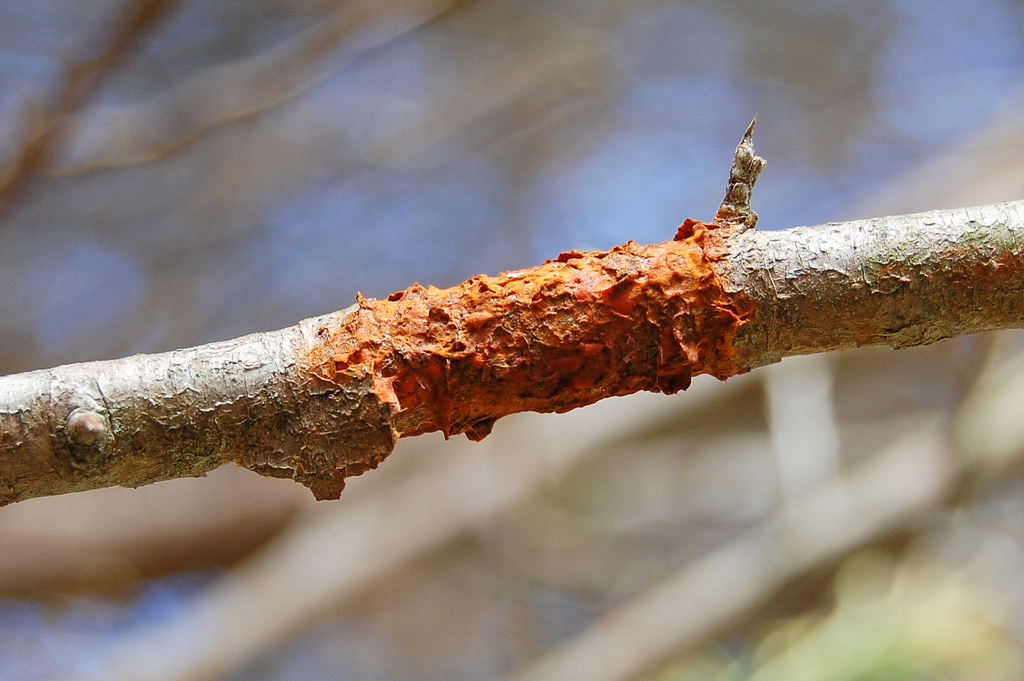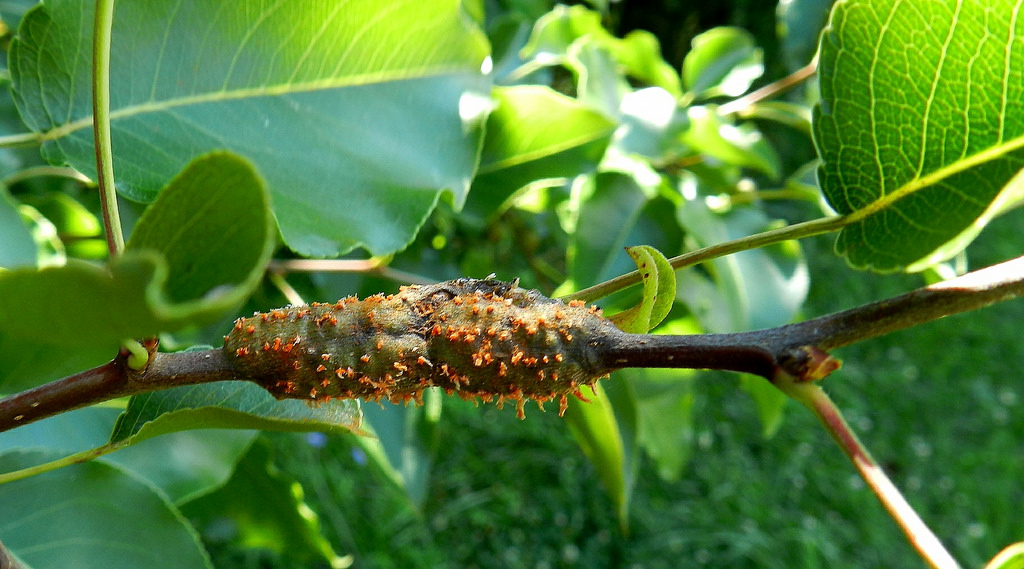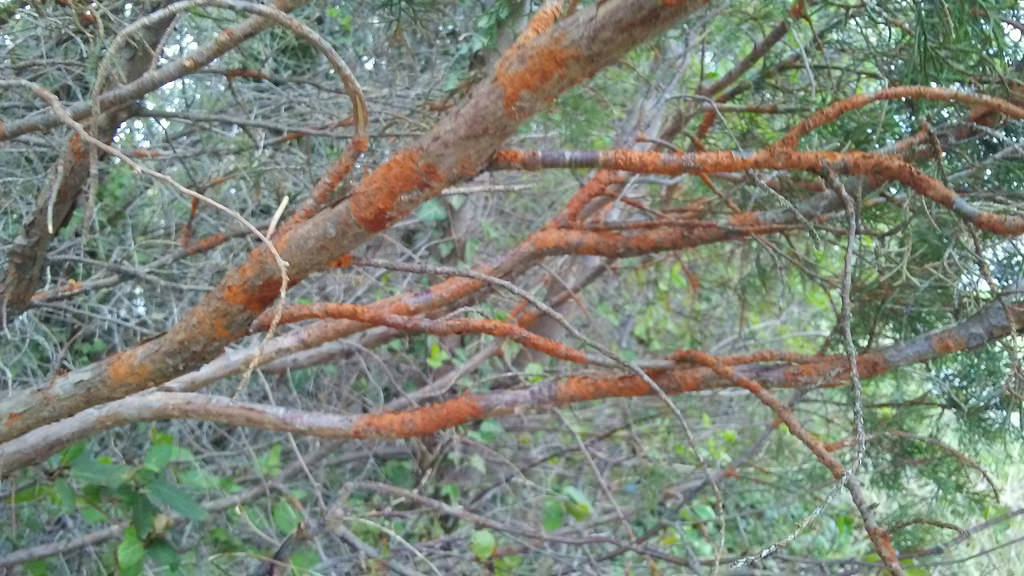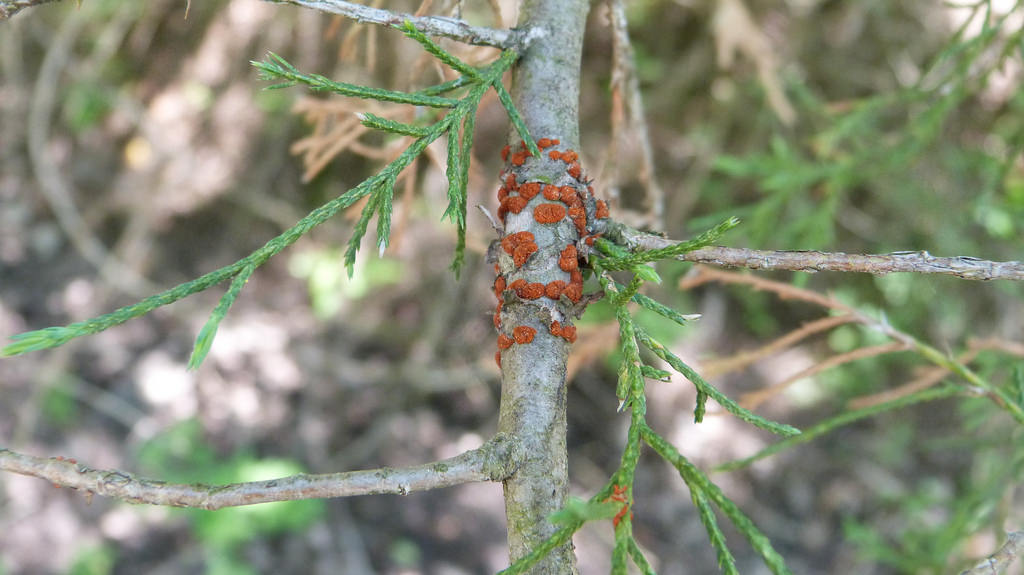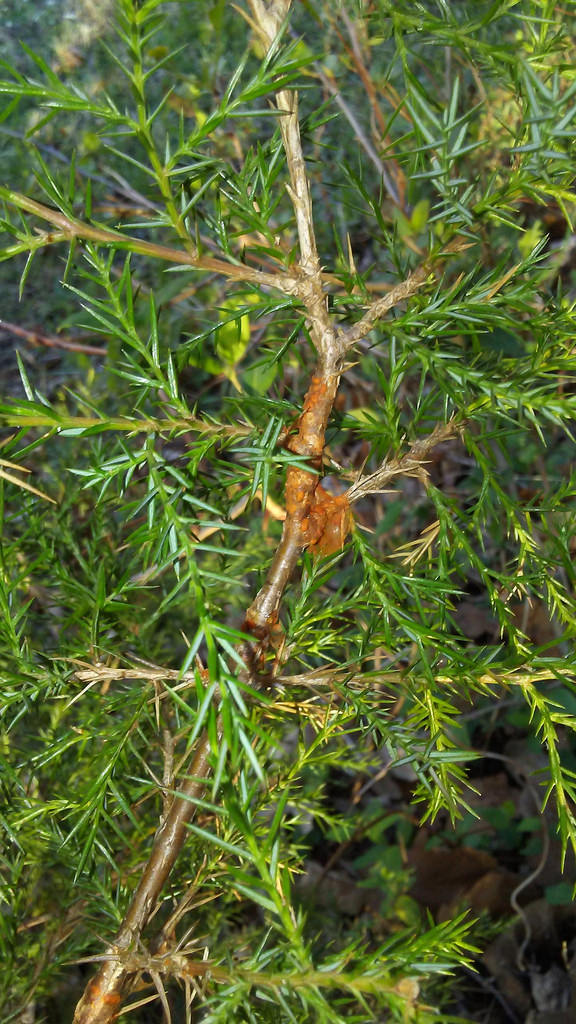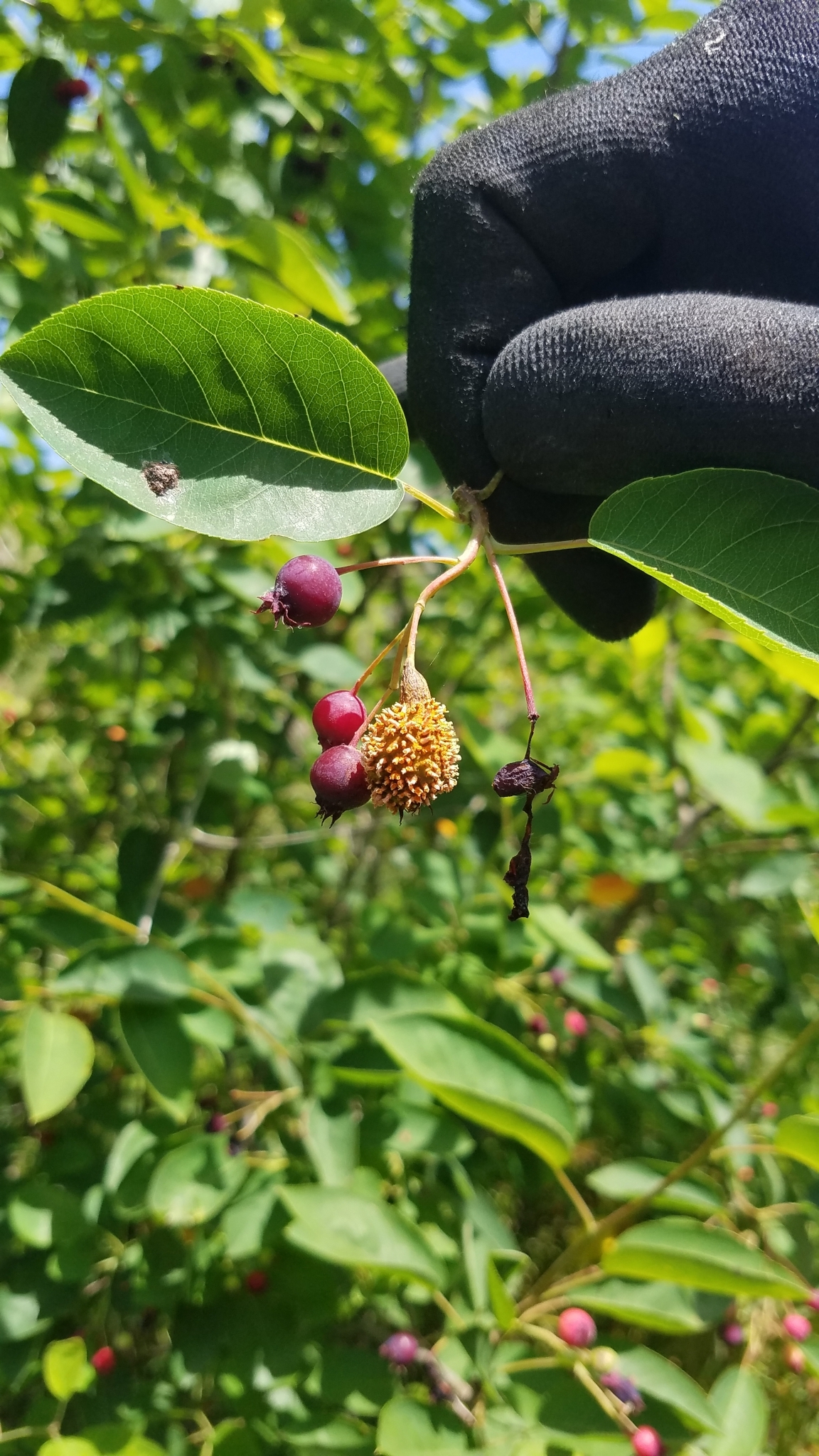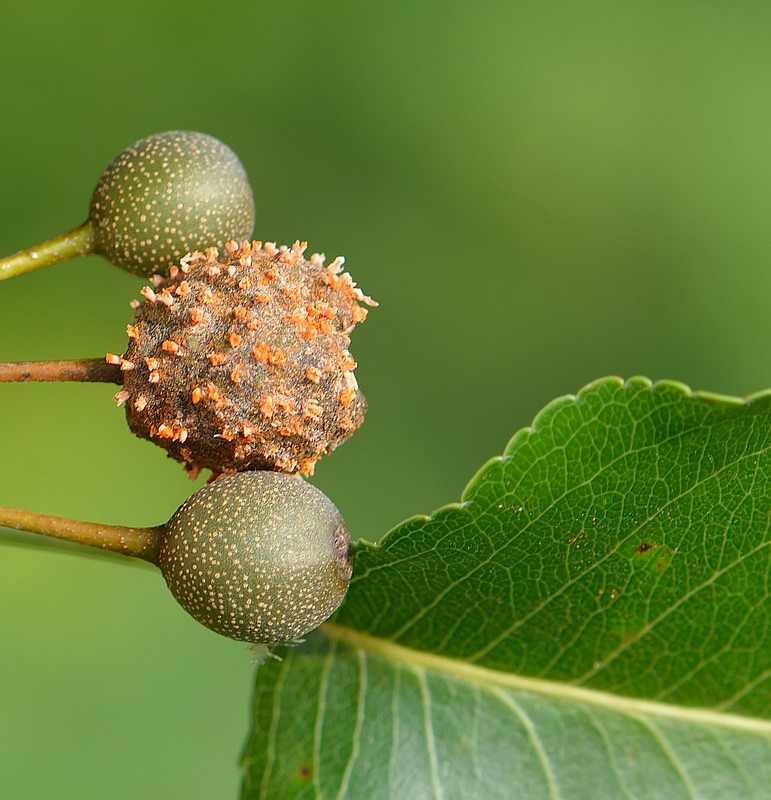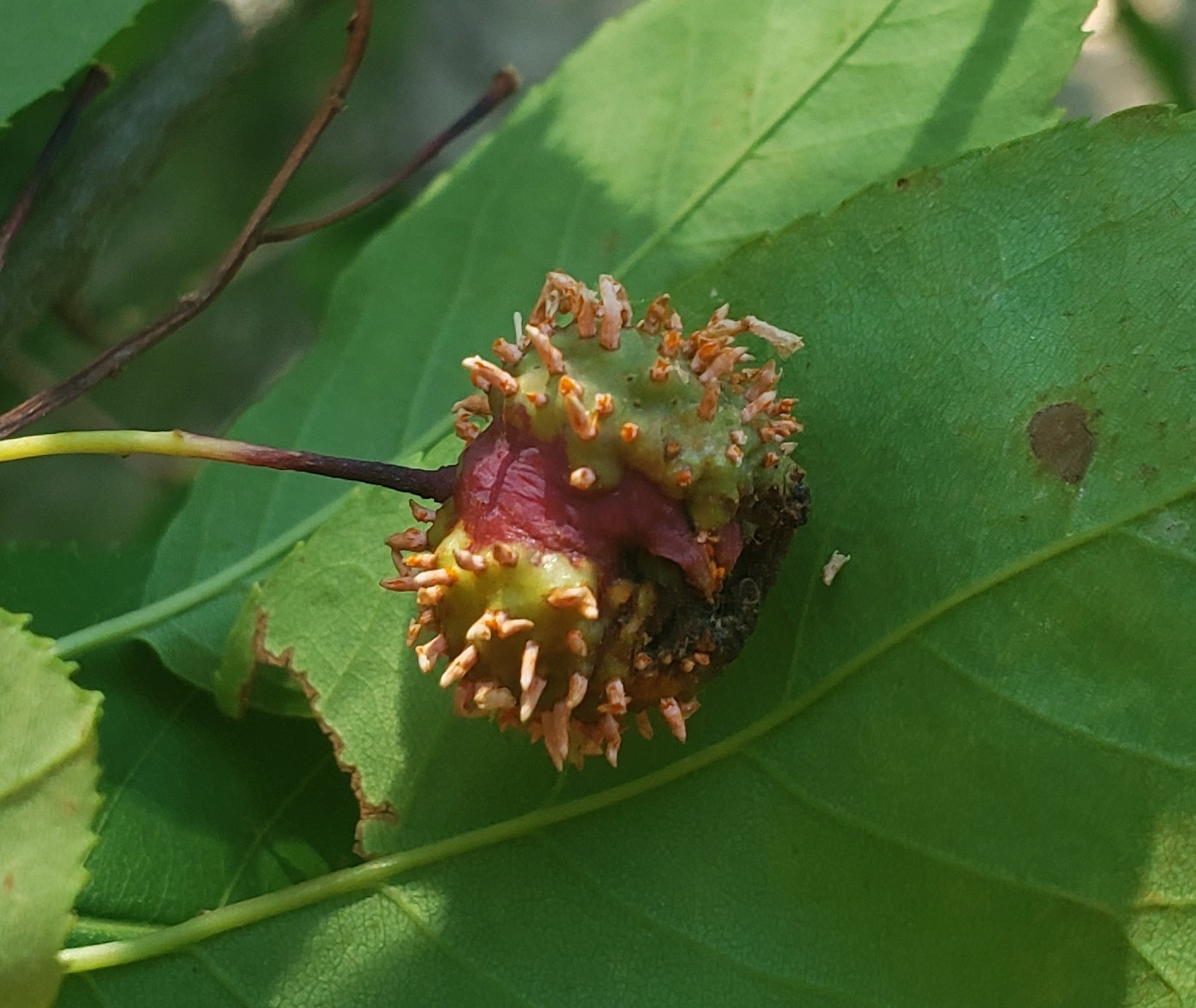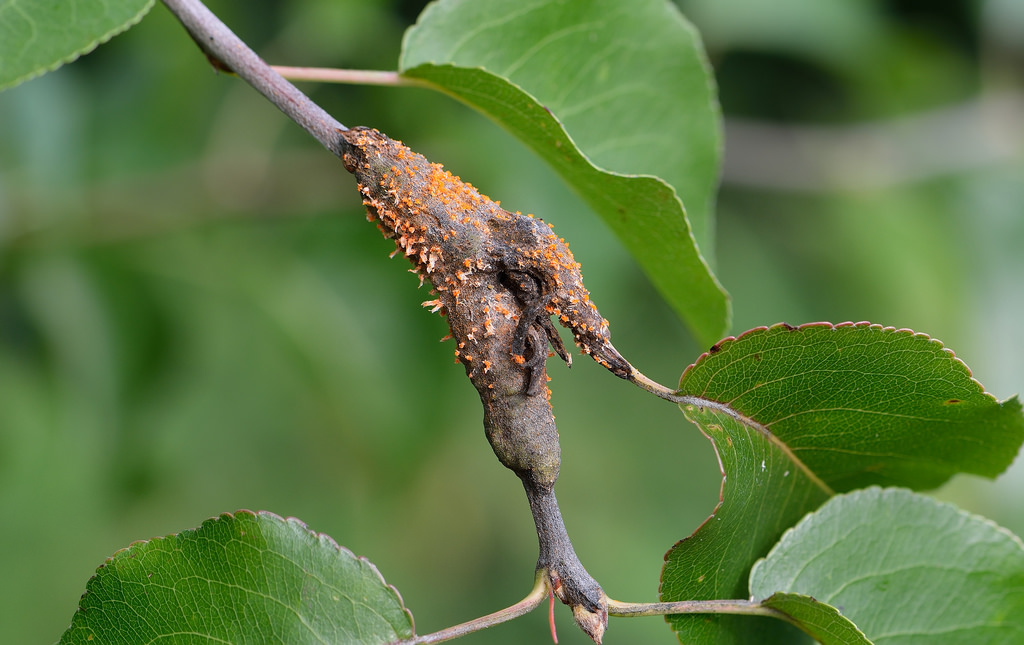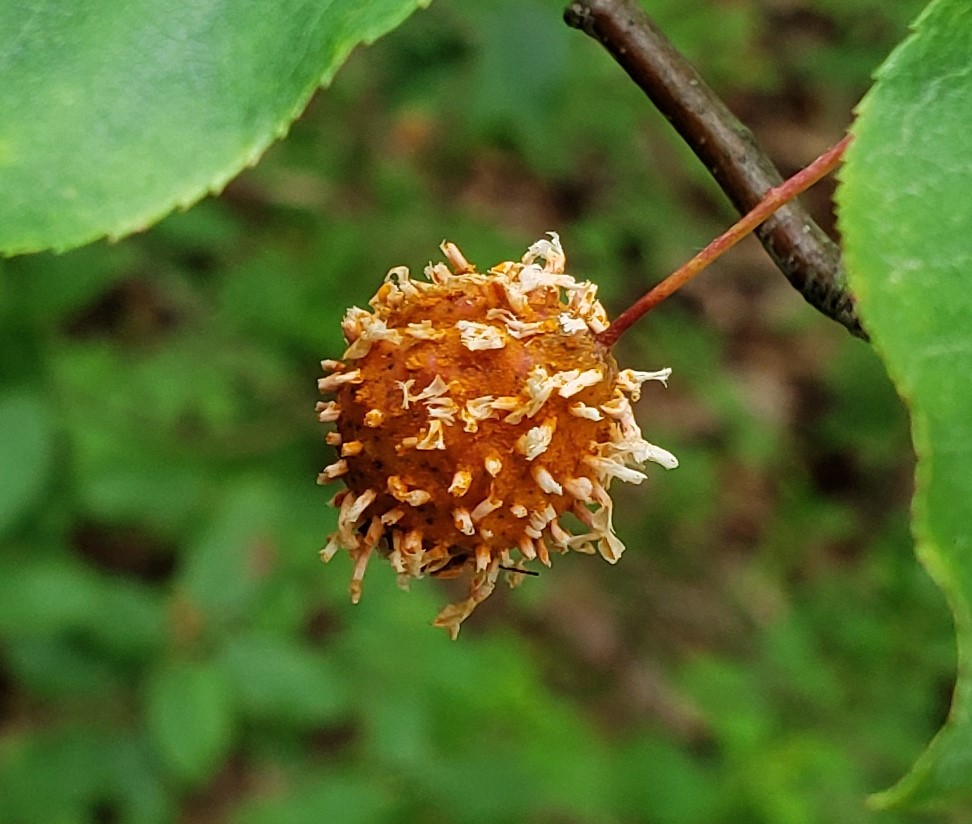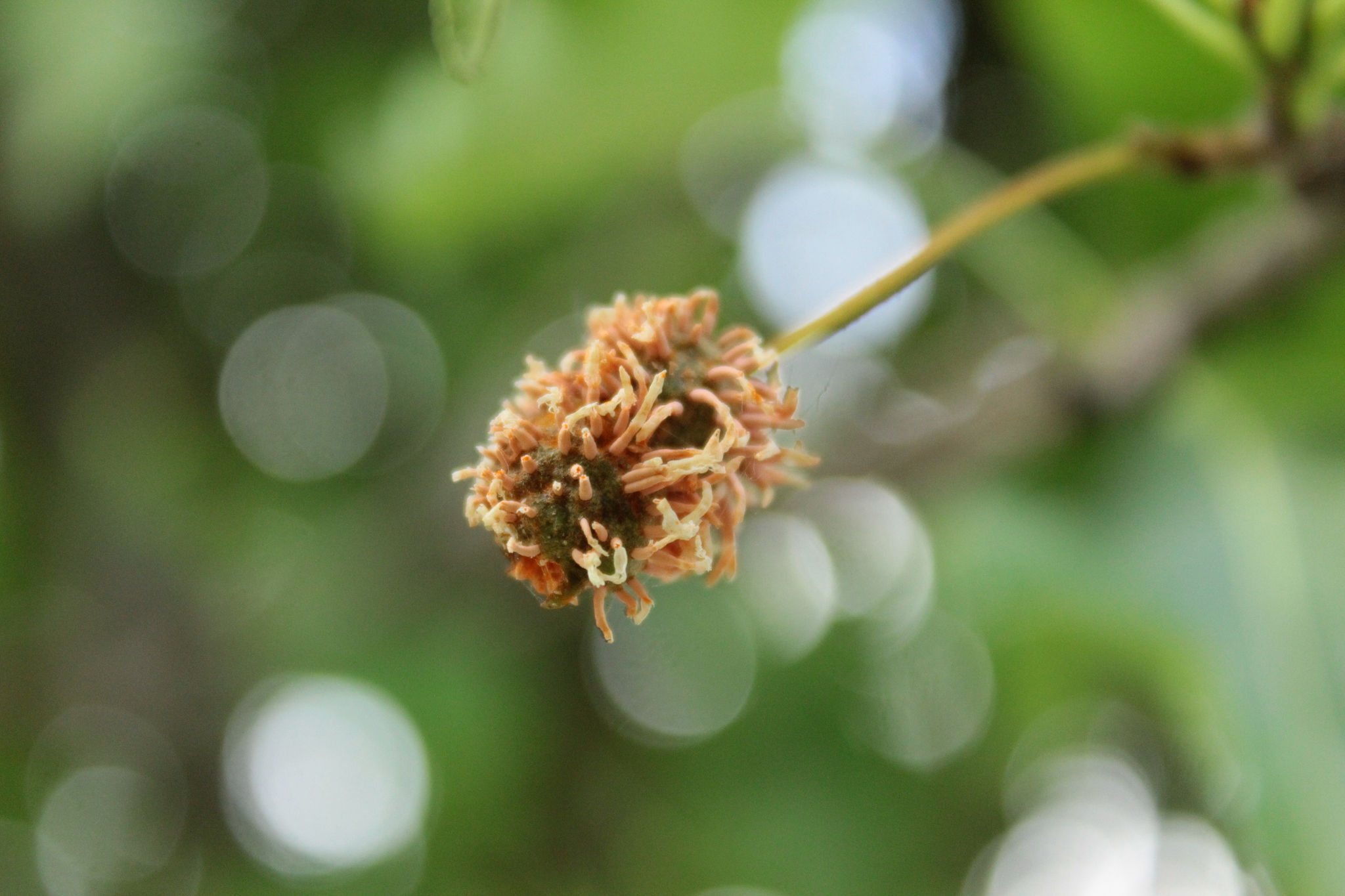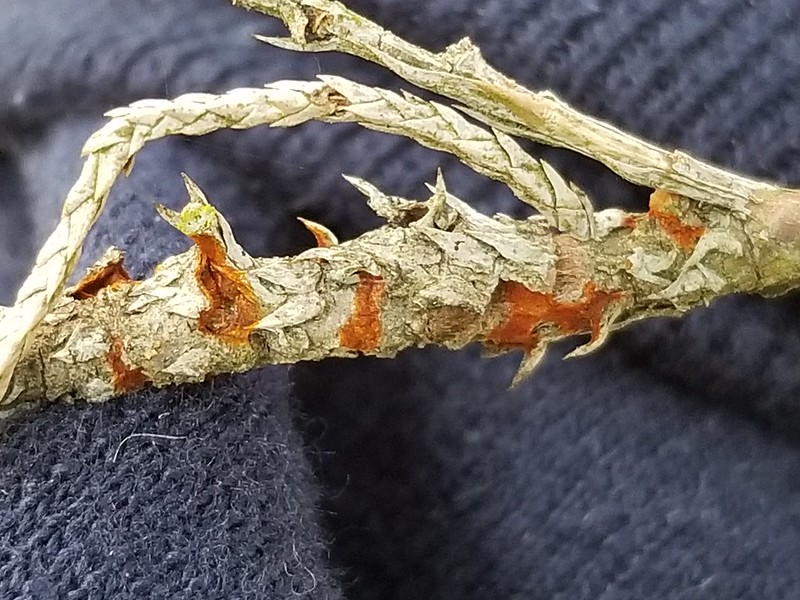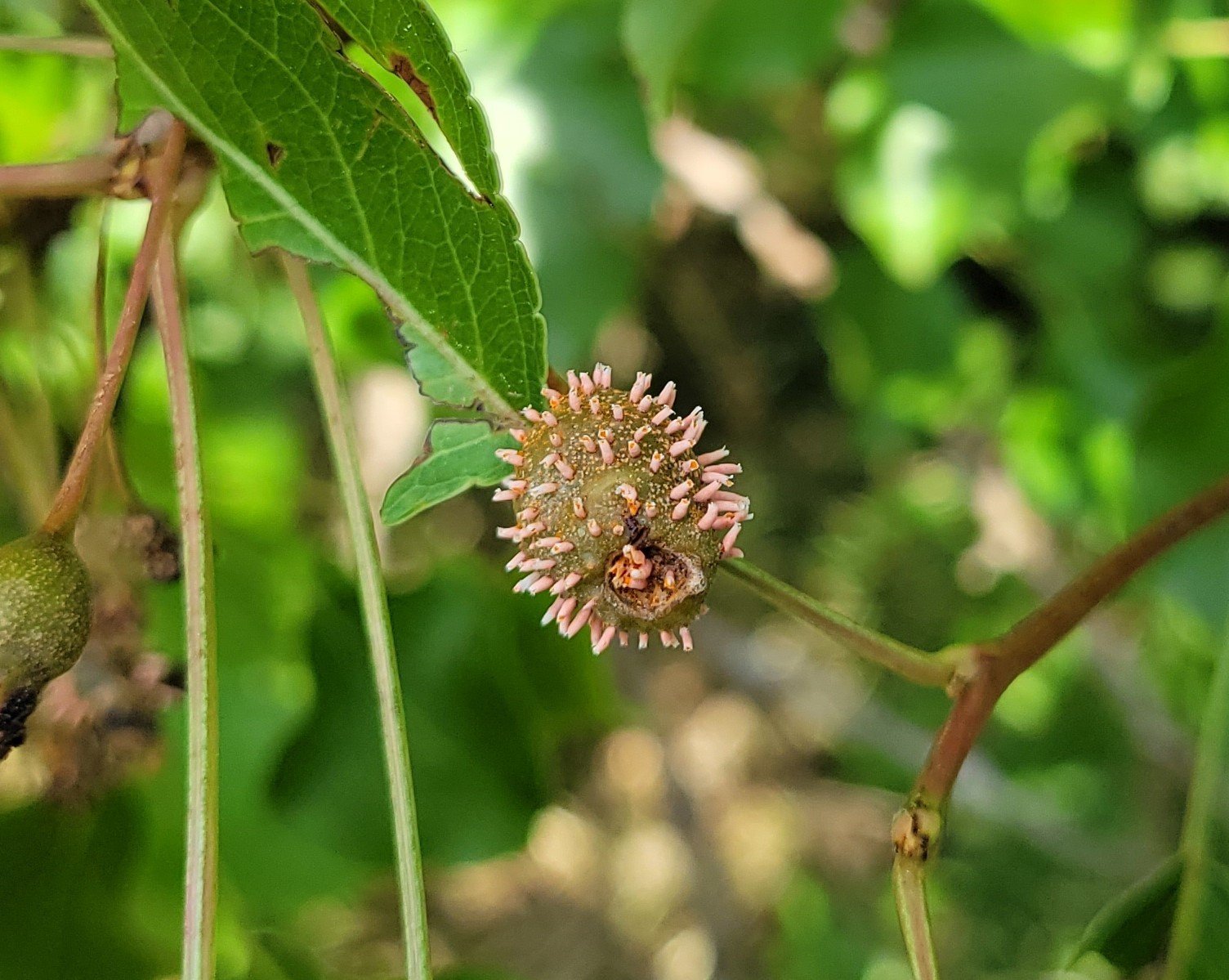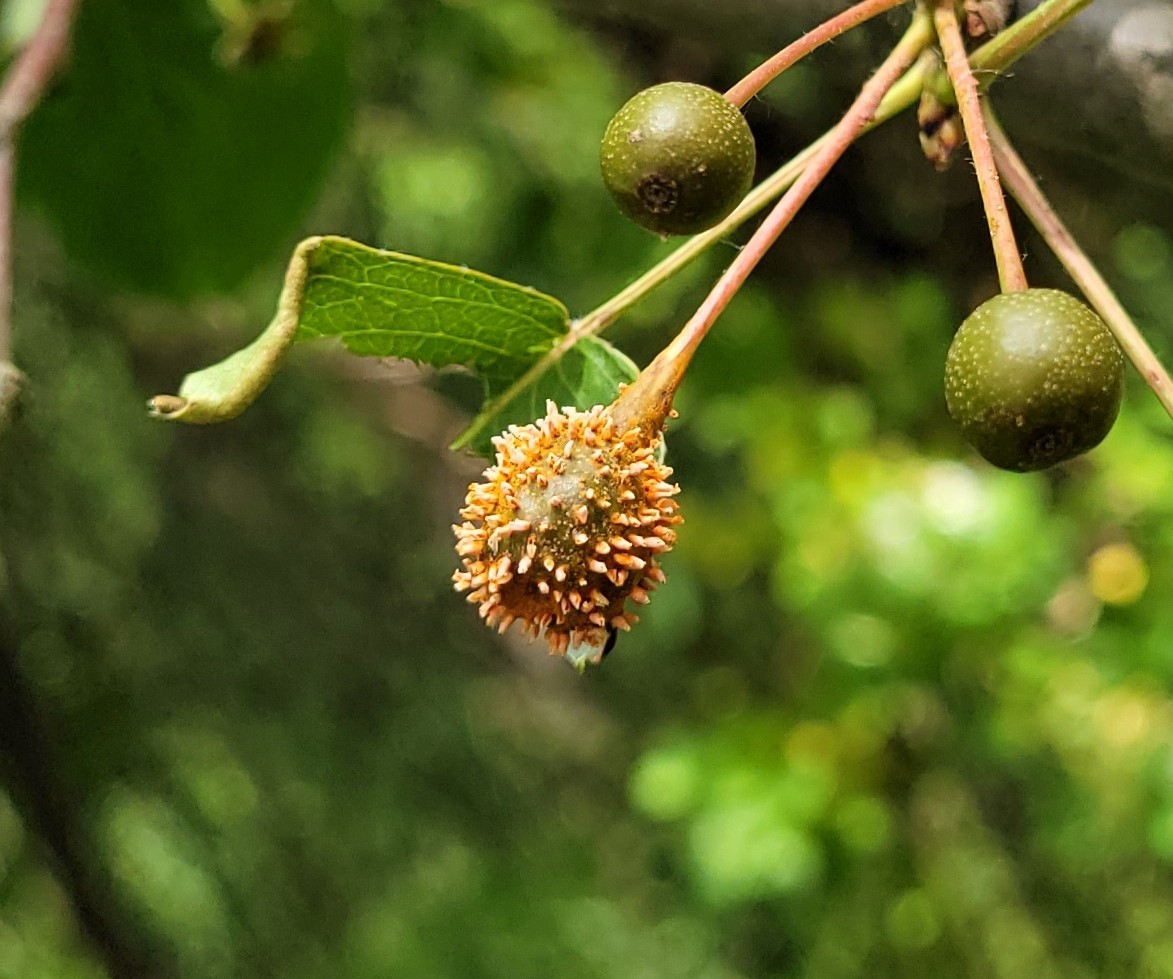Map Snapshot























112 Records
Relationships
This species causes flaky swellings on the branches of Eastern Redcedar before infecting the fruit of the quince in the spring (L. Biechele, pers. comm.).
Seasonality Snapshot
Eating mushrooms can be dangerous. One should do so only with expert advice and great care. MBP accepts no liability for injury sustained in consuming fungi or other biodiversity. Use of media featured on Maryland Biodiversity Project is only permitted with express permission of the photographer.
A Cedar Quince Rust in Somerset Co., Maryland (6/8/2014).
View Record Details
Media by
Lance Biechele.
Cedar Quince Rust in Harford Co., Maryland (4/18/2018).
View Record Details
Media by
Austin Jennings.
Cedar Quince Rust on a Bradford Pear in Howard Co., Maryland (7/6/2014). Verified by Lance Biechele.
View Record Details
Media by
Nancy Magnusson.
Cedar Quince Rust in Allegany Co., Maryland (4/23/2016).
View Record Details
Media by
Richard Orr.
Cedar Quince Rust on Eastern Red Cedar in Calvert Co., Maryland (4/3/2017).
View Record Details
Media by
Tyler Bell.
Cedar Quince Rust in Howard Co., Maryland (5/8/2018).
View Record Details
Media by
Sue Muller.
Cedar Quince Rust on Eastern Red Cedar in Calvert Co., Maryland (4/5/2017).
View Record Details
Media by
Tyler Bell.
Cedar Quince Rust in Anne Arundel Co., Maryland (5/23/2021). (c) Matthew Beziat, some rights reserved (CC BY-NC).
View Record Details
Media by
Matthew Beziat.
Cedar Quince Rust in Worcester Co., Maryland (6/5/2020). (c) Katherine Phillips, some rights reserved (CC BY-NC).
View Record Details
Media by
Katherine Phillips via iNaturalist.
Cedar Quince Rust on Bradford Pear in Howard Co., Maryland (7/12/2014).
Media by
Richard Orr.
Cedar Quince Rust in Anne Arundel Co., Maryland (6/8/2020). (c) Matthew Beziat, some rights reserved (CC BY-NC).
View Record Details
Media by
Matthew Beziat.
Cedar Quince Rust in Harford Co., Maryland (6/4/2018).
View Record Details
Media by
Dave Webb.
Cedar Quince Rust in Howard Co., Maryland (7/12/2014).
View Record Details
Media by
Richard Orr.
Cedar Quince Rust in Anne Arundel Co., Maryland (6/20/2020). (c) Matthew Beziat, some rights reserved (CC BY-NC).
View Record Details
Media by
Matthew Beziat.
Cedar Quince Rust in Cecil Co., Maryland (6/28/2019). (c) Joseph Salmieri Jr., some rights reserved (CC BY-NC).
View Record Details
Media by
Joseph Salmieri Jr. via iNaturalist.
Spores of Cedar Quince Rust in Howard Co., Maryland (5/8/2018). Irregularly ellipsoid, 2-celled, brownish walls; measured 47.0-57.1 (63.5) x 26.0 microns.
View Record Details
Media by
Robert Solem.
Cedar Quince Rust in Howard Co., Maryland (3/13/2020).
View Record Details
Media by
Sue Muller.
Cedar Quince Rust in Queen Anne's Co., Maryland (5/25/2021). (c) Matthew Beziat, some rights reserved (CC BY-NC).
View Record Details
Media by
Matthew Beziat.
Cedar Quince Rust in Queen Anne's Co., Maryland (5/25/2021). (c) Matthew Beziat, some rights reserved (CC BY-NC).
View Record Details
Media by
Matthew Beziat.
Source: Wikipedia
| Gymnosporangium clavipes | |
|---|---|

| |
| A cedar-quince rust canker on a hawthorn branch | |
| Scientific classification | |
| Domain: | Eukaryota |
| Kingdom: | Fungi |
| Division: | Basidiomycota |
| Class: | Pucciniomycetes |
| Order: | Pucciniales |
| Family: | Gymnosporangiaceae |
| Genus: | Gymnosporangium |
| Species: | G. clavipes
|
| Binomial name | |
| Gymnosporangium clavipes Cooke & Peck, (1873)
| |
| Synonyms | |
|
Gymnosporangium germinale F. Kern, (1908) | |
Gymnosporangium clavipes is a plant pathogen, a fungus that causes cedar-quince rust. Similar to Gymnosporangium juniperi-virginianae and Gymnosporangium globosum, the fungus infects a wide range of Rosaceae, such as apple, hawthorn and quince trees, and also requires an evergreen host such as eastern red cedar or a number of other juniper species to complete its life cycle.[1]
References
[edit]- ^ James Schuster, Cedar-Quince Rust. Accessed July 16, 2008.
External links
[edit]![]() Media related to Gymnosporangium clavipes at Wikimedia Commons
Media related to Gymnosporangium clavipes at Wikimedia Commons
